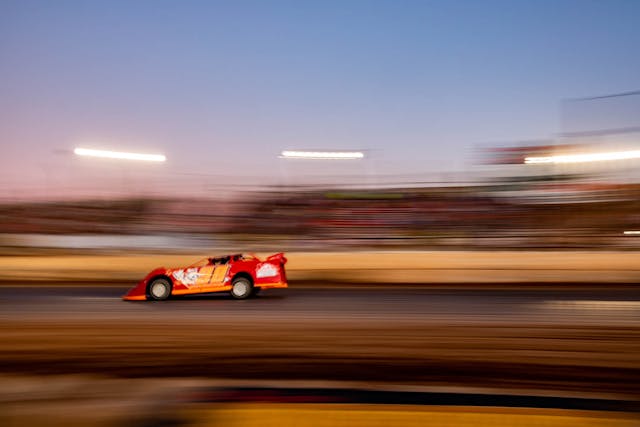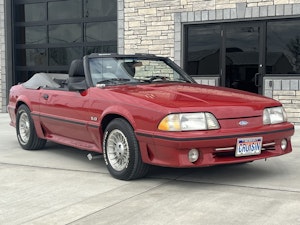Media | Articles
Tony Stewart and Ray Evernham join forces to create SRX short-track racing series
Of the many ideas started by racers on a barroom napkin, the Superstar Racing Experience (SRX) is one of the freshest. Tony Stewart and Ray Evernham—two of NASCAR’s most renowned Hall of Famers—have partnered with former NASCAR COO George Pyne and broadcast agent Sandy Montag to helm the new short-track racing series, which hopes to pit talented drivers from all disciplines and eras of circle-track racing against each other on a mixture of paved and dirt ovals. The action will air in a primetime slot on CBS Saturday at some point in 2021.
The six-race series isn’t meant to compete with NASCAR; instead, Stewart and Evernham hope that SRX does for traditional American oval racing what International Race of Champions (IROC) did for road racing.
“When I got invited to run IROC, it was a huge honor,” Stewart told Jenna Fryer of the Associated Press. “You were part of an elite group of drivers that got the opportunity to race each other. I always took that really seriously. When the series went away, I think it left a big hole. It didn’t need to be filled then, but we have an opening now that gives an opportunity for guys like myself and a lot of the guys who will be invited who […] still have the ability, still want to race, to come back. Hopefully they will feel the way I did, like it’s a cool opportunity to take seriously and be looked up to as the best out there.”
Though no official details have been announced yet, Stewart and Evernham already have a wish list of drivers. Evernham’s wish list includes the likes of Scott Dixon, Tony Kanaan, Jimmie Johnson, Jeff Gordon, Juan Pablo Montoya, and Paul Tracy, but the pair is also eyeing folks in the grassroots ranks who have earned the opportunity to race with the greatest. Including Stewart himself, the series offers 12 drivers the chance to take home a trophy. In addition to some eager grassroots candidates, we suspect that more than a few drivers mentioned by Evernham will pick up the gauntlet. Don’t worry too much about a lopsided lineup, however; SRX randomly matches drivers with experienced crew chiefs, distributing personalities and experience across the board.
Who’s ready to race? America’s best short tracks. Saturday nights – under the lights on @CBSSports. Let’s do this!
— Superstar Racing Experience (@SRXracing) July 13, 2020
Marketplace
Buy and sell classics with confidence
SRX will differentiate itself with a condensed format of two 45-minute heats and no pit stops, aiming to avoid the marathon viewing times of many professional sports broadcasts and, specifically, to fend off the 200-mph, follow-the-leader phenomenon of modern NASCAR Cup racing. The abbreviated races will eliminate the need for fuel and tire conservation strategies deployed during the longer Cup races—strategies which are necessary in an endurance format but which also lead to restrained racing. SRX’s organizers hope that the compact race format will keep broader TV audiences hooked and attract viewers who would pass on an entire afternoon’s worth of racing.
“That’s enough time to showcase the personalities in a way that’s fun and appealing and exciting,” Pyne told Sports Business Journal’s John Ourand. “Having close, competitive racing, you’re going to get 20 or 30 lead changes in a race.”
When it comes to the mechanical side of the equation, Evernham will design the cars himself. Since NASCAR’s move to restrictor plates in the 1980s, development in Cup cars has been largely restrained to the invisible realm of aerodynamics. The heavily-regulated body and aero package leads to the slow, formation-flying racing we see today in NASCAR. By letting teams tinker with weight balance and suspension setups, Evernham hopes to eliminate SRX’s dependency on downforce and free drivers and crew chiefs to extract every ounce of potential out of their cars. Adaptability will be key here: SRX is looking at both dirt and paved ovals, along with a road course or two, so a crew chief’s ability to mold the chassis to changing conditions will be as important as his driver’s ability to decipher a unique racing surface.
The last component here is advertising. Though ads sound like yawn-worthy details compared to on-track action, advertising revenue keeps a series financially fueled and functioning. Often, sponsors themselves become intertwined with teams’ racing operations and support their efforts beyond their initial commitments. That’s where Pyne and Montag come in, wrapping the racing action that enthusiasts and drivers love into a package that makes sense for a platform like CBS. Having a Saturday evening airtime makes SRX a highly compelling candidate for ad placement compared to, say, an online stream, and sets the bait for bigger sponsorships. Hopefully, the slot will allow SRX to support itself financially and avoid the fate of many other racing organizations before it, including IROC. For now, though, the four partners have invested their own money to get the ball rolling; Sports Business Daily estimates the sum in the low seven-figure range.
As NASCAR stumbles onto its feet after years of decline, SRX looks to shine a light on America’s heartland with a potentially huge TV audience and an attractive racing format.










